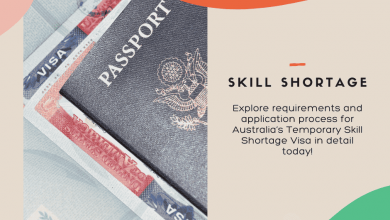Navigating the world of visas can be challenging, especially when you’re aiming for an executive-level position. Australia’s visa sponsorship system is known for being both rewarding and competitive. In this comprehensive guide, we’ll walk you through the essential steps to secure executive visa sponsorship in Australia for 2024/2025. From understanding visa options to mastering the application process, you’ll get all the key details you need to turn your career aspirations into reality.
Understanding the Australian Visa Sponsorship System
Australia’s visa sponsorship system is designed to meet its economic needs, with a focus on attracting top talent from around the world. If you’re an executive or senior professional seeking to relocate to Australia, it’s crucial to understand which visa options align best with your professional experience and qualifications.
The most common visa pathways for executives include:
- Temporary Skill Shortage (TSS) Visa (Subclass 482)
- Employer Nomination Scheme (ENS) Visa (Subclass 186)
- Global Talent Visa (Subclass 858)
Each of these visas has its requirements, processes, and eligibility criteria, and we’ll delve into the details of each.
Step 1: Identify the Right Visa for Your Situation
When aiming for an executive role, choosing the correct visa type is paramount. Here are the top options:
- Temporary Skill Shortage (TSS) Visa (Subclass 482): This visa is suitable if you have an employer willing to sponsor you for a specific role. It allows you to work in Australia for up to four years. Typically, this visa requires that your job be on the Australian occupation list.
- Employer Nomination Scheme (ENS) Visa (Subclass 186): This visa is ideal for executives seeking permanent residence. It requires employer sponsorship, and you must have at least three years of work experience in a relevant role. The benefit of the ENS visa is that it provides a pathway to permanent residency.
- Global Talent Visa (Subclass 858): If you’re a highly skilled professional in an executive role with a proven record of excellence, this could be the most straightforward route to move to Australia. The Global Talent Visa offers priority processing and does not require sponsorship from an Australian employer, provided you meet the criteria for global achievement.
Step 2: Find an Australian Employer Willing to Sponsor You
Securing executive visa sponsorship starts with finding an Australian employer who values your skills enough to sponsor your visa application. Here’s how to increase your chances:
- Networking: Leverage professional platforms such as LinkedIn to connect with recruiters and senior executives in Australia. Joining Australian business forums and attending virtual career fairs can also put you in touch with potential employers.
- Australian Job Portals: Use job search platforms such as SEEK, Indeed Australia, and CareerOne, specifically filtering for jobs that mention “visa sponsorship available.” Make sure your resume is tailored to showcase the unique skills you bring to the table, particularly those needed in Australia’s industries.
- Recruitment Agencies: Partnering with a recruitment agency specializing in executive placements in Australia can significantly improve your chances of securing a sponsorship opportunity. Agencies are often directly connected with businesses looking to hire overseas talent.
Step 3: Get Your Skills Assessed
For many visas, such as the ENS and TSS, it is mandatory to have your skills assessed by an approved assessing authority. This step is crucial as it ensures your qualifications and experience meet Australian standards. Depending on your industry, the relevant body might be VETASSESS, Engineers Australia, or a similar authority.
Ensure that all your documents, including degrees, diplomas, and work references, are updated and certified. The skill assessment process can take several weeks to months, so starting early is crucial to avoid delays.
Step 4: Submit an Expression of Interest (EOI)
If you’re applying through the Global Talent or ENS pathway, you may need to lodge an Expression of Interest (EOI) via SkillSelect. This online platform allows the Australian government and employers to access your details and consider you for relevant visa opportunities. Your EOI should be compelling—highlighting your leadership experience, industry contributions, and how your skills align with Australia’s economic needs.
Step 5: Obtain Employer Nomination
If you’ve successfully landed a job offer, your employer will need to submit a nomination application on your behalf. This step involves demonstrating to the Department of Home Affairs that the role could not be filled by an Australian worker and that you, as a foreign applicant, are the best fit.
Employers must be registered sponsors, which means they meet stringent requirements set by the government, including offering fair pay and providing genuine employment. It’s essential that you maintain open communication with your employer to ensure they complete the nomination process accurately and timely.
Step 6: Prepare Your Visa Application
Once the nomination is approved, you can submit your visa application. This involves:
- Health Checks: Undergoing a medical examination with a panel physician recognized by the Australian Department of Home Affairs.
- Police Clearances: Submitting police clearance certificates from any country you’ve lived in for more than 12 months over the past decade.
- Gathering Documentation: Including employment contracts, certified academic qualifications, proof of English proficiency (IELTS or TOEFL scores), and a valid passport.
Step 7: Attend an Interview (If Required)
In some cases, you may be asked to attend an interview. This can be conducted online or in person and is intended to verify your employment history, qualifications, and understanding of the Australian job market. Make sure you are well-prepared to discuss your role and the value you will bring to the organization.
Step 8: Wait for Visa Grant and Start Your New Chapter
The processing time for visas can vary, typically ranging from a few weeks to several months, depending on the specific visa subclass and the completeness of your application. Once approved, you’ll receive your visa grant notice. You can then make plans for relocation and discuss with your employer a suitable start date.
Tips for Maximizing Your Success Rate
- Ensure Compliance: One of the primary reasons visas get rejected is failure to meet compliance requirements. Be diligent in understanding visa criteria and timelines.
- Professional Assistance: Consider hiring a migration agent or lawyer, especially if you’re applying through a complex visa subclass like ENS. Migration agents can ensure all your paperwork is accurate, avoiding costly errors.
- Stay Informed: Visa policies are subject to change. Keep an eye on official updates from the Australian Department of Home Affairs to stay current on any changes in requirements or regulations.
Industries with High Demand for Executive Talent
The industries that have consistently high demand for executive talent in Australia include:
- Healthcare and Biotechnology: Executives with experience in healthcare management and biotech innovation are in high demand.
- Technology and IT: Roles such as Chief Technology Officer (CTO) and IT Managers are sought after, especially in Sydney and Melbourne.
- Mining and Resources: Australia’s vast mining sector has numerous executive opportunities, especially in Western Australia.
- Finance and Business Services: High-level professionals with backgrounds in financial management, corporate strategy, and risk analysis are also highly desired.
Conclusion
Securing an executive visa sponsorship in Australia is an achievable goal if approached strategically. By understanding the various visa pathways, finding a sponsoring employer, and adhering closely to the requirements, you can successfully embark on your journey to a new life in Australia. Keep your qualifications up-to-date, network strategically, and be prepared for a thorough application process. A well-executed strategy can lead to not just a job, but a long-term career in one of the world’s most vibrant and diverse countries.




